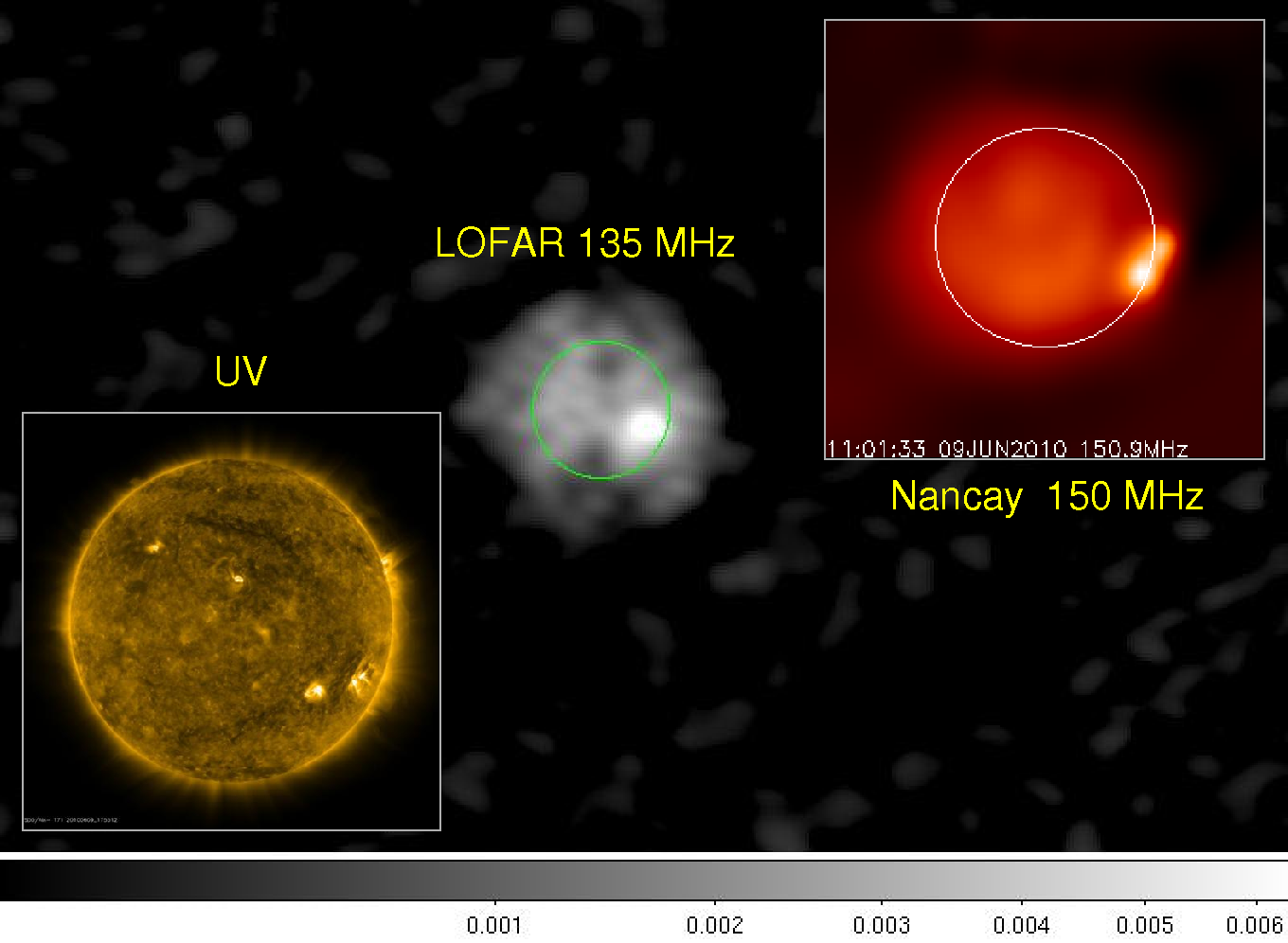Daily Image
22-07-2010First resolved LOFAR image of the Sun
| Submitter: | Olaf Wucknitz |
| Description: | LOFAR is able to observe a wide variety of phenomena ranging from local electric fences, thunderstorms and airshowers out to the very distant universe. Today's image shows an object at the intermediate distance of about 8 light-minutes. Its appearance at optical wavelengths is familiar to most of us, but at radio wavelengths it looks very different. First interferometric observations of the Sun with LOFAR were initiated by the Solar group in Potsdam (Frank Breitling, Gottfried Mann, Christian Vocks) together with James Anderson, Antonis Polatidis and Olaf Wucknitz. The idea was to observe a field centred between the Sun and a number of nice calibrator sources on 9th of June 2010. Eight ten-minute scans were observed, four each with the LBA and HBA. Here we show very first imaging results from one of the scans between 10:17 and 10:27 UTC. Only a couple of subbands in the HBA range were used to produce this image. As expected the Sun is slightly larger than in the optical (green circle). In addition, it shows a compact active region to the lower right. This region coincides very well with two sunspot regions in the corresponding UV image. The same region is also seen by the Nancay Radioheliograph and seems to be real. Whether the other features on the disk can be trusted as well has to be investigated. The image was produced with the now established combination of my own software for the initial flagging and calibration and difmap for the final imaging and self-calibration. Only baselines shorter than about 1 km were included to avoid large gaps in the uv coverage. The compact region still seems to be visible on longer baselines. The resolution of the image is about 6 arcmin. This first attempt relies on self-calibration which was made easier by the compact bright component. The calibrator sources were not used yet. Closer inspection of the data shows that the structures are not only strongly frequency-dependent but also show fast variability with time. The active region flares on timescales of seconds. The motion picture and additional information will be provided after the summer break. |
| Copyright: | public domain |
| Tweet |  |
